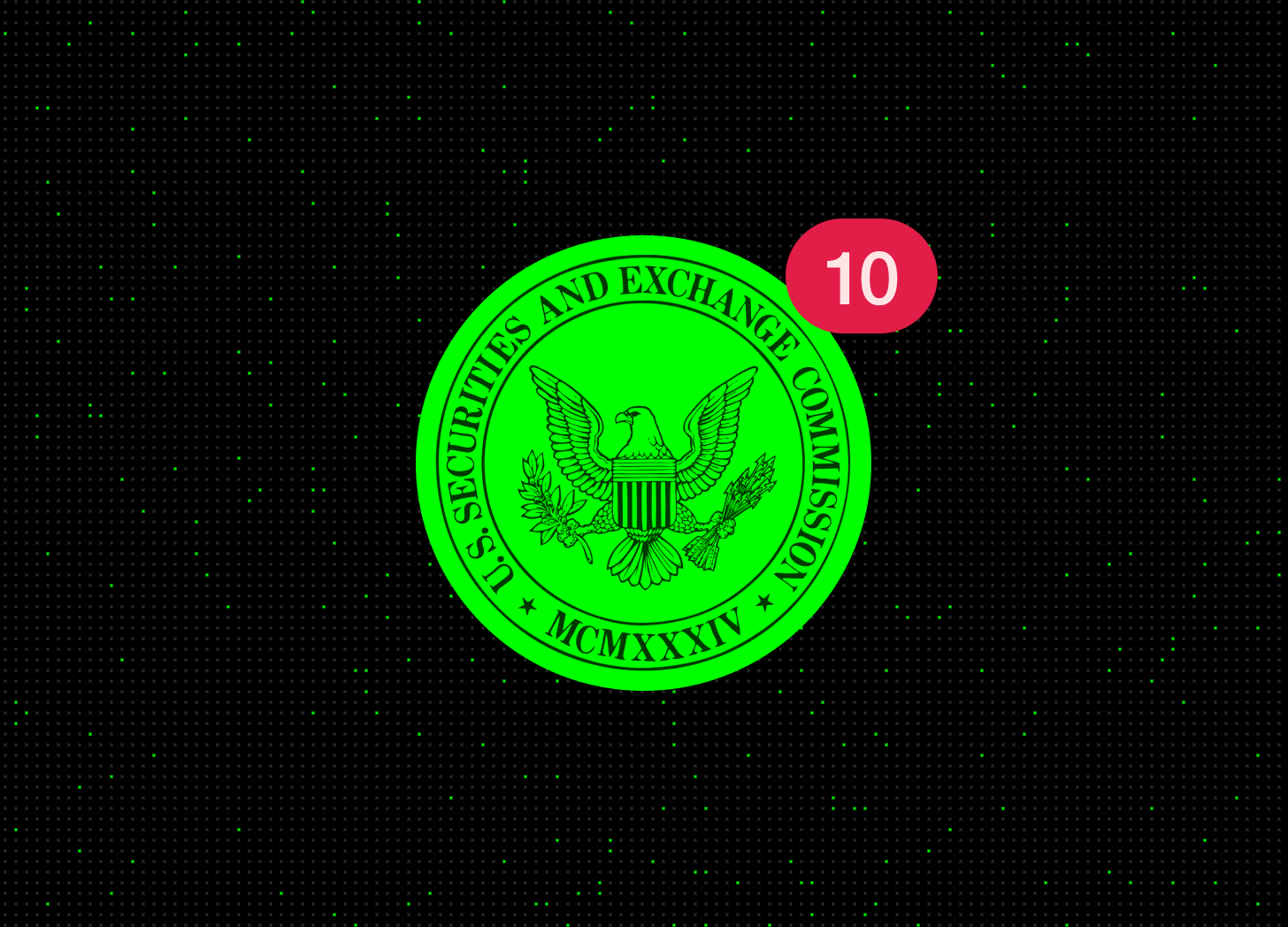10 NFT Regulatory Signals You Need to Understand Now
Not all NFTs are securities—but some definitely are.
Commissioner Hester Peirce’s recent remarks at the SEC Speaks Conference ignited headlines claiming the SEC had declared “NFTs aren’t securities.” Let’s set the record straight: that’s an oversimplification.
Peirce made a case for regulatory nuance—not blanket exemption. And the SEC’s latest guidance makes one thing clear: some NFTs may still fall squarely under securities law depending on how they’re structured, sold, or marketed.
Here are the 10 regulatory signals you need to understand to navigate where NFT policy is heading.
1. Peirce: Not All NFTs Are Securities
Peirce said, “Many non-fungible tokens (‘NFTs’) also are not securities, including NFTs designed to compensate their creators over time.”
This quote is careful and specific—not a blanket declaration. She pointed to creator compensation models as a use case where NFTs are unlikely to be securities. But she stopped short of saying most or all NFTs are exempt.
2. Peirce Warns Against Overreach
Peirce went on to outline a range of NFT use cases and warned: We must resist the urge to shoehorn every digital asset into the securities framework.
This was a call for regulatory precision, not deregulation. The speech advocated against one-size-fits-all enforcement, not oversight altogether.
3. NFT Classification Depends on the Use Case
While the May 2025 SEC FAQ does not use the exact phrase “facts and circumstances,” it consistently implies that NFTs and other digital assets must be evaluated individually based on their structure, marketing, and functionality—especially when they resemble investment contracts.
If an NFT walks and talks like a security it’s going to be treated like one.
4. Fractional NFTs Raise Red Flags
The May 2025 SEC FAQ does not explicitly mention “fractionalized NFTs,” but its guidance implies that certain NFT structures—especially those involving shared ownership, pooled assets, or expectations of profit—may meet the definition of a security under the classic Howey Test. Projects that tokenize fractional interests or promote financial returns based on the efforts of others should tread carefully.
5. Investment Schemes Using NFTs Could Be Securities
The SEC warns the use of NFTs to raise capital, particularly when tied to an enterprise or community project promising returns, may implicate the federal securities laws.
Even Peirce acknowledged:
“A fundamental question... is whether [an instrument] involves an investment of money in a common enterprise with a reasonable expectation of profits to be derived from the efforts of others.”
This means NFT projects that suggest profits or income could trigger securities analysis—especially if they're framed as community investments or revenue-generating schemes.
6. NFT Marketplaces May Face Exchange Regulation
The SEC’s May 2025 FAQ does not mention NFTs specifically in the context of marketplace regulation. However, it reinforces that platforms facilitating transactions in crypto assets deemed securities may be subject to regulation under the Exchange Act. If your NFT marketplace enables trading of tokens with financial characteristics—fractional NFTs, revenue-sharing tokens, or roadmap-driven mints—you could fall under Exchange Act jurisdiction.
SEC jurisdiction is triggered by the nature of the offering, not the size. Scale does affect how likely you are to be pursued, but you don’t need to be big to get in the SEC’s sights. Compliance risk exists from Day 1 if you cross the securities line.
7. Peirce Advocates Proportional Regulation, Not Deregulation
In her May 15, 2025 joint statement, Commissioner Peirce expressed concern that the SEC’s FAQ guidance may not provide sufficient clarity for crypto market participants. While she did not reject the need for regulation, she emphasized the importance of providing regulatory guidance that enables innovation and compliance. Her statement suggests a desire for proportionate, actionable pathways—not blanket enforcement or overly broad interpretation of securities laws.
That’s not a dismissal of securities law—it’s a push for regulatory attention calibrated to the seriousness, scale, and potential harm of the conduct in question.
8. The SEC Remains Focused on Enforcement
While Commissioner Peirce continues to advocate for regulatory nuance and innovation-friendly guardrails, the broader Commission has shown no indication of easing its enforcement-first posture. SEC Press Release 2025-72 reaffirms the agency’s commitment to applying existing securities laws across evolving sectors—including digital assets and emerging technologies.
So while Peirce is arguing for nuance, the broader Commission current stance remains enforcement-first.
9. Crypto Task Force Roundtables Are Setting the Stage
The SEC’s Crypto Task Force is actively discussing how to approach digital assets more coherently—particularly in coordination with other agencies like the CFTC and FinCEN.
Expect future guidance that could blend AML, investor protection, and market structure concerns—especially as NFTs intersect with lending, staking, or RWA tokenization.
10. Function Over Form Still Matters
Peirce’s approach underscores that function should determine classification—not surface-level features like file format or token standard.
While she didn’t say it verbatim in her recent speech, her entire regulatory philosophy suggests that how an NFT is used matters far more than what it is. File type, metadata, or token standard doesn’t matter. If it functions like a security as defined by the Howey test, it gets treated like one.
Bottom Line
Peirce didn’t say “NFTs aren’t securities.” She said some aren’t, and others might be, depending on the use case. She urged caution against regulatory overreach—but the rest of the SEC hasn’t necessarily followed suit.
If you’re building or investing in this space, this moment is not about relief—it’s about reading the fine print and building responsibly. Use the breathing room Peirce is advocating for to get your legal frameworks tight—before enforcement shows up.



